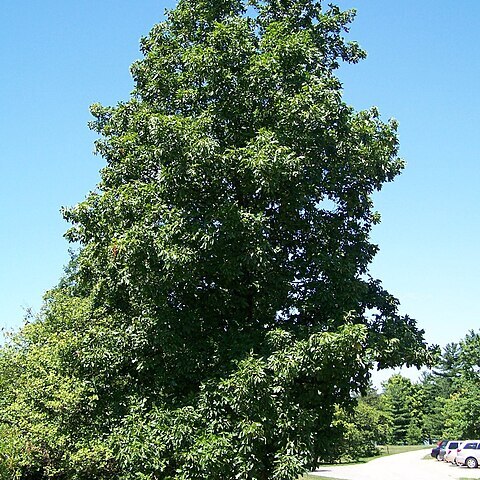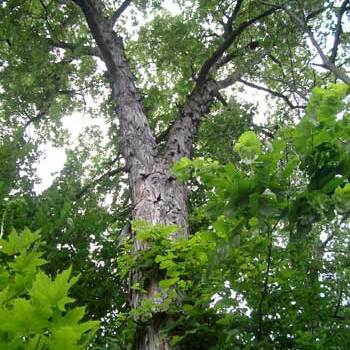Trees deciduous, monoecious. Branchlets with solid pith. Terminal buds naked or with false-valved scales (or overlapping). Leaves odd-pinnate; leaflets 3-17, margin serrate. Inflorescences lateral or terminal on old or new growth; male and female inflorescences separate: male spikes in clusters of 3, lateral at base of new growth or rarely on old growth, pendulous; female spike terminal on new growth, erect. Flowers anemophilous. Male flowers with an entire bract; bracteoles 2; sepals usually absent; stamens (2 or)3-7(-10), anthers pubescent or rarely glabrous. Female flowers with an entire bract adnate to ovary; bracteoles 3, adnate to ovary; sepals absent; style absent; stigmas commissural, stigmatic disc 4-lobed. Fruiting spike erect. Fruit a drupelike nut with a thick, 4-valved husk covering a smooth or wrinkled shell 2-4-chambered at base. Germination hypogeal.
Staminate catkins slender, elongate, borne in peduncled groups of 3 at the summit of the previous year’s growth or at the base of that of the current year; “perianth” 2–3-lobed, closely subtended and usually surpassed by the bract; stamens 3–10, commonly 4; anthers pilose; pistillate fls solitary or in spikes of 2–10, terminating the branches, each closely subtended by a cup-shaped, 4-lobed, perianth-like involucre that ripens with the fr to form a husk; tepals obsolete, husk ± dehiscent into 4 valves, releasing the hard shelled nut; trees with hard, heavy wood, continuous pith, and odd-pinnate lvs, the 3 terminal lfls usually the largest; lfls with involute vernation. (Hicoria) 15, e. N. Amer. and e. Asia.


